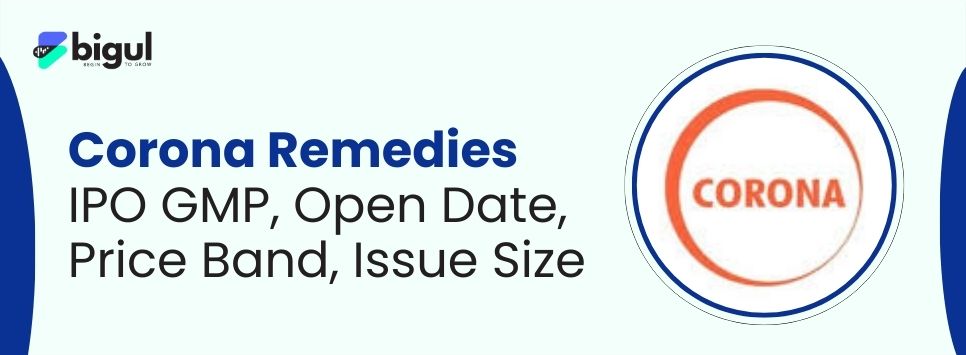Positional trading is a way of trading where you purchase something (such as stock) and keep it for a long period of time—weeks, months, or even years. The only aim is to gain a profit due to a large market trend. You are not concerned with the short-term small fluctuations that take place on a daily basis. The technique is very laid back and patient which differentiates it from other forms of trading.
What is Positional Trading?
Positional trading is when an investor buys and holds stocks for months. It seeks to profit from big market trends while ignoring small price movements that take place on a daily basis. It means positional trading is distant from the stress of reacting to shorter time frame movements.
For instance, you would purchase a stock of a good company and keep it for a few months. You should sell only after the stock’s price rises considerably due to a strong trend.
Positional traders are investors who examine a number of variables relevant to the market, and utilize analysis of some kind to assist with entry and exit decisions. They generally believe that timing the market precisely is not as important as remaining in the market, whilst allowing for a reasonable amount of time. This type of trading requires a clear mind and faith in your plan. You need to be prepared to watch the price fall for some time without becoming fearful and selling.
Is Positional Trading Suitable for You?
Positional trading is suitable only if your personal goals and risk profile support this type of trading. For those who are comfortable with staying in their positions for extended periods of time and wish to experience some long-term progress, it is an excellent choice. Also, it is the least active compared to day trading, so that means it’s less stressful.
Positional trading is ideal for those who:
-
Have a full-time job: It will work for people that do not have all day to watch the market. A few weekend hours is usually enough time to manage your trades.
-
Want a low-stress style: It takes away the pressures of day trading, where you need to be making rapid decisions all the time.
-
Are patient: It requires a lot of emotional strength to keep a stock when its price goes down slightly, without panicking and selling out.
-
Are not afraid of some risk for some larger reward: Unlike passive investors who capture small, consistent advantages, positional traders are comfortable taking intelligent risks expecting greater rewards.
Types and Strategies of Positional Trading
Positional strategies are all about looking for and riding trends. There are various ways in which It can be done and these can be classified into following broad groups:
Main Strategy Categories:
-
Trend Following: This is the most straightforward one. You spot a clear-cut, long-term trend (up or down) and take a position in that direction. You stay with the trade until you see evidence that it is changing direction.
-
Long-Term Equity Holding: You purchase shares of great companies and keep them for months or years. You do this since you think the company will grow significantly over the long run.
-
Growth Investing: This involves investing in stocks that have high potential to grow significantly in the long run. Positional traders seek companies that are growing rapidly and have sound finances.
-
Value Investing: It looks at a stock that may be undervalued. Traders practicing value investing look for companies that are low-cost, with a low price to earnings (P/E) ratio, and will hold them till they become worth something.
-
Thematic Trading: Traders will speculate on large, long term themes that affect the world. Renewable power, emerging technologies for example.
-
Futures and Options Trading: This employs special financial instruments known as derivatives to keep an exchange open for an agreed time. These exchanges are riskier but can provide larger profits.
Specific Trading Methods
-
Moving Average Crossover: Moving Average Crossover: Two averages appear on the chart and help make decisions. Whenever the smaller period average line goes above the bigger period average, it becomes a buy signal. And when it goes under, it becomes a sell signal.
-
Support and Resistance: Investors look for major price points where the market typically halts or reverses. They buy below a support level (where the price typically bottoms) and sell above a resistance level (where the price typically tops).
-
Trading Breakouts: When the price of a stock breaks through a support or resistance level that has been firm, a breakout occurs. That means a new price momentum is likely beginning. When a breakout occurs, traders look to position themselves in the breakout's direction looking to capture quick profits prior to the steady trend that follows.
-
Pullback Strategy: This is where you wait for a stock that is in a solid uptrend to experience a minor, temporary price dip. You purchase during the dip to enter at a lower price before the bulk trend resumes.
How to Pick Stocks for Positional Trading
Quantitative (Number-Based) Analysis:
-
Trend Strength: Select firms that you see have the sea price in a sustainable upward trend.
-
Liquidity: Make sure the stock trades often. You should be able to sell or buy the stock without creating a massive price shift from the trade.
-
Industry performance: Look for an industry that is doing well at this time.
-
Fundamentals: Select firms that are financially strong, greater than zero earnings, and low or little debt.
Qualitative (Non-Numbers) Analysis:
-
Company Strengths: Does the Company offer a product or service that cannot be copied by others?
-
Management Quality: Strong leadership can seriously impact future growth.
-
Market Environment: Get to know the large economic trends and how they could influence the firm in the future.
How to Find the Trend
Identifying the market trend is the most important factor for successful positional trading. Traders employ a combination of viewing charts and employing specific tools.
-
Identifying the Chart: A Bullish Trend is a Series of "Higher Highs" and "Higher Lows"
-
Moving Averages: These are common tools. If a trader would like to find a long-term trend, they use a longer-term average such as a 50 or 200-day.
-
The RSI, relative strength index: This scale runs from 0 to 100. This can help identify whether a stock is oversold (too low) or overbought (too high), which will imply a trend may be about to reverse.
-
Bollinger Bands: These are lines that show how far the price is deviating. As the lines expand, it indicates that a large price move is nearing.
-
MACD: It illustrates the interaction of two moving averages with each other to show changes in trends and their strength.
-
Fibonacci Retracement: It helps find potential levels where the price may bounce or stagnate. Traders use these levels to decide on entry and exit.
The Mind of a Positional Trader
While day traders like to make quick decisions, positional traders like to take it slow and deliberate. The largest challenge they face is managing a "paper loss"—when a stock's value decreases for a short period of time after you purchase it. An inexperienced trader may be frightened and sell, but a positional trader is aware that it is a natural aspect of a larger trend. They remain committed to their strategy, understanding that these little declines are merely temporary.
Risk Management
Risk management is indispensable for a positional trader. Since you keep positions for extended periods of time, they are subject to greater changes in the market.
-
Stop-Loss: A stop-loss order should be executed in order to protect your funds. The preferred strategy is to set a stop-loss that sells your stock if it falls 5–10% from the purchased price.
-
Diversification: It is always safer to invest your money in more than one stock. It reduces the odds of losing all your money at once.
-
Risk-Reward Ratio: Before making a trade, think about how much you are willing to put at risk for the potential return. You are establishing a risk-reward ratio where in the event of a short-term loss, you should be able to see long-term results.
- Don't Overtrade: Positional trading is for the patient. When you follow a plan, it stops you from making as many trades and potentially losing your money.
The Benefits of Positional Trading
The benefits of positional trading are as follows:
-
Great profit potential: You have the opportunity to take profits from long trends.
-
Lower Costs: You're trading less and therefore your commissions/fees are lower.
-
Less Stress: You don't have to worry about the fluctuations in the markets. This means less stress and better decision making.
-
More Flexibility: If you are busy, it is a nice benefit to not have to monitor the markets all the time.
-
Less Impact of Manipulation: As you have built up your experience, you are less impacted when trades are manipulated in the short term.
The Bad Things About Positional Trading
There are additional risks associated with position trading:
-
Requires a lot of money: Opening and maintaining positions for a long time usually requires a lot of money.
-
Increased Market Risk: Holding positions for months could expose you to significant market-wide risks, such as an unexpected market meltdown brought on by unexpected news.
-
Less Flexibility: When you have a commitment to a long trade, you will very likely be unable to react and pursue other, faster-moving, potentially profitable ideas.
-
Fewer Opportunities: It is best used in trending markets. It is difficult to find quality trading opportunities when the market is moving sideways or without a strong directional bias.
-
Lost Fast Money: Keeping your mind on the long-haul can create an opportunity cost, including missed short-term price spikes.
Positional Trading vs. Day Trading vs. Swing Trading
Positional trading is quite different from swing and day trading in a couple of ways:
|
Feature |
Positional Trading |
Day Trading |
Swing Trading |
|
Time Frame |
Weeks to months |
Same day |
A few days to weeks |
|
Time Needed |
Low |
Very High |
Medium |
|
Stress |
Low |
High |
Medium |
|
Number of Trades |
Few |
Many |
Several |
|
Risk |
Long-term |
Intraday only |
Short-term |
Limitations of Positional Trading
There are certain restrictions on positional trading:
-
Slow Reaction: You might not be able to get out of your position in time if a trend reverses significantly
-
Hidden Trades: There are not many good trades when the market is not in a distinct trend.
-
Big Capital: Due to long holding time, you require a bigger account to manage risks.
-
A Lot of Patience: Your money is tied up for a distinct period of time, meaning you cannot use those funds elsewhere.
Conclusion and Key Tips for Traders
Positional trading requires discipline and patience but can be very rewarding for traders who are willing to hold onto trades for a while. It is a combination of fundamental analysis of a company and technical analysis -- and most critically, self-control over emotions to maintain focus.
Key tips for Traders.
-
Only trade with surplus money.
-
Avoid Penny Stocks: Why: Larger stocks are safer and easier to execute trades with so you should invest in them.
-
Keep a journal: Write down every transaction that you make. This allows you to learn from your mistakes.
-
Be educated: Look at your financial statements to see what the markets are doing.









.jpg)
.jpg)
